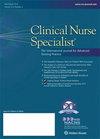我们是否有道德义务为入住重症监护室的产科患者提供团队护理方法?
IF 0.9
4区 医学
Q3 NURSING
引用次数: 0
摘要
本文章由计算机程序翻译,如有差异,请以英文原文为准。
Do We Have an Ethical Obligation to Provide a Team Approach to Nursing Care for Obstetric Patients Admitted to the Critical Care Unit?
32-year-old woman, 36 weeks' gestation, was admitted from the emergency department with HELLP (hemolysis, elevated liver function, and low platelets) syndrome. She presented with hypotension, tachycardia, and fetal tachycardia as indicators of decom-pensation. The patient was rapidly transported to the operating room on the labor and delivery (L&D) unit for an emergency cesarean delivery under general anesthesia. In the operating room, she ruptured a liver hematoma and had a massive hemorrhage requiring multiple units of blood, an emergency call for a vascular surgeon, and packing of her abdomen to stop the bleeding. A uterine tamponade balloon was placed to promote uterine tone and help stop the hemorrhage. The patient was unstable and was recovered in the L&D unit with a CRNA (certified registered nurse anesthetist) at the bedside. After initial recovery, the patient was transferred to the intensive care unit (ICU). The infant with evidence of hypoxic-ischemic encephalopathy was transferred to a tertiary center for head cooling shortly after delivery. The ICU staff stated that they were uncomfortable monitoring a postpartum patient with this disorder. They were unfamiliar with how to provide breast care, access and in-struct the patient on the use of breast pump, or perform fundal examinations. They did not know the expected ref-erence ranges for vital signs and laboratory values in the postpartum patient. They were also not trained in the management of the uterine tamponade device and therefore not equipped to competently manage this intervention. Lastly, they shared that they were not familiar with how to perform basic postpartum assessments and would need to rely on the obstetric
求助全文
通过发布文献求助,成功后即可免费获取论文全文。
去求助
来源期刊
CiteScore
1.50
自引率
16.70%
发文量
83
审稿时长
>12 weeks
期刊介绍:
The purpose of Clinical Nurse Specialist™: The International Journal for Advanced Nursing Practice is to disseminate outcomes of clinical nurse specialist practice, to foster continued development o fthe clinical nurse specialist role, and to highlight clinical nurse specialist contributions to advancing nursing practice and health policy globally. Objectives of the journal are: 1. Disseminate knowledge about clinical nurse specialist competencies and the education and regulation of practice; 2. Communicate outcomes of clinical nurse specialist practice on quality, safety, and cost of nursing and health services across the continuum of care; 3. Promote evidence-based practice and innovation in the transformation of nursing and health policy for the betterment of the public welfare; 4. Foster intra-professional and interdisciplinary dialogue addressing nursing and health services for specialty populations in diverse care settings adn cultures.

 求助内容:
求助内容: 应助结果提醒方式:
应助结果提醒方式:


